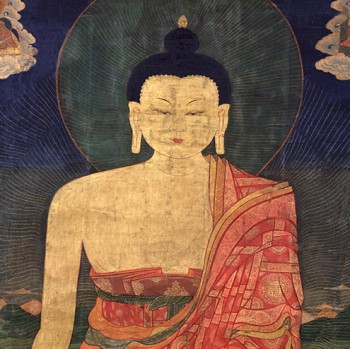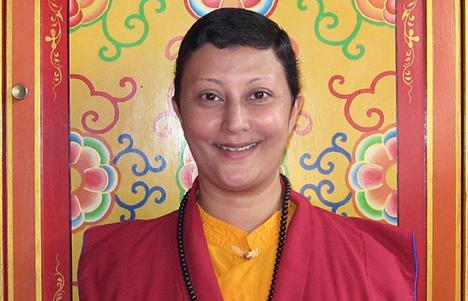
The Rubin Museum of Art presents a weekly meditation session led by a prominent meditation teacher from the New York area, with each session focusing on a specific work of art. This podcast is recorded in front of a live audience, and includes an opening talk, a 20-minute sitting session, and a closing discussion. The guided meditation begins at 15:56.
If you would like to attend Mindfulness Meditation sessions in person or learn more, please visit our website at RubinMuseum.org/meditation.
This program is supported with thanks to our presenting partners Sharon Salzberg, the Interdependence Project and Parabola Magazine.


Theme: Empowerment
Like passing clouds that obscure the sun of an enlightened nature”¦ suffering can end.” Inspired by a thangka painting of Shakyamuni Buddha, Lama Aria Drolma explains the core tenets of the Buddha’s Four Noble Truths and the Eightfold Path to end desire and suffering.
Related Artwork

Artwork Description
This painting features Buddha Shakyamuni with a pair of his monk-disciples. The composition is remarkably symmetrical, featuring a central axis around which everything finds its right proportions and place. Even the landscape is arranged ideally. The noble equilibrium and poised coordination of parts forge a visual metaphor for the enlightened meditation of Buddha Shakyamuni. Once enlightened, the Buddha becomes the “world pillar,” connecting the heavens above, the earth below, and the mountains that knit them together. The effect is one of solemn grandeur.
Soaring in the sky to either side of the Awakened One Sage of the Shakya Clan (Buddha Shakyamuni) are two monks with their robes spread like wings behind them. Flying monks celebrate the extraordinary abilities gained on the path to enlightenment””flight being a power achieved by one who has reached a high level of spiritual attainment. Here the monks soar above the sun and moon. Tibetan literature reveals that when these celestial orbs are depicted together in one painting, they suggest concepts including transcendent wisdom and method, a combination of skills needed for the path to enlightenment.
Buddha Shakyamuni perfectly represents the notion of wisdom in this tradition. The Buddha’s insight into the true nature of reality and his life lived with compassion allowed him to reach enlightenment and to escape samsara.
About the Speaker

Lama Aria Drolma has been studying and practicing Tibetan Buddhism for over 10 years. She is trained in the Dharma Path program of progressive stages of meditation and contemplation for serious practitioners offered by Kagyu Thubten Choling monastery. Lama Aria Drolma teaches meditation worldwide, offers corporate meditation programs, and is also invited as a keynote speaker at universities and other organizations. Lama Aria Drolma is a graduate of a traditional Tibetan Buddhist retreat spanning three years and three months, which is an advanced, completely cloistered, intensive meditation training program. She attended Mumbai University in India and graduated with a B.A. in sociology, and is trained in computer programming from NIIT, India. Lama Aria Drolma also actively volunteers as a fundraiser for breast cancer research and supports several nonprofit organizations.
